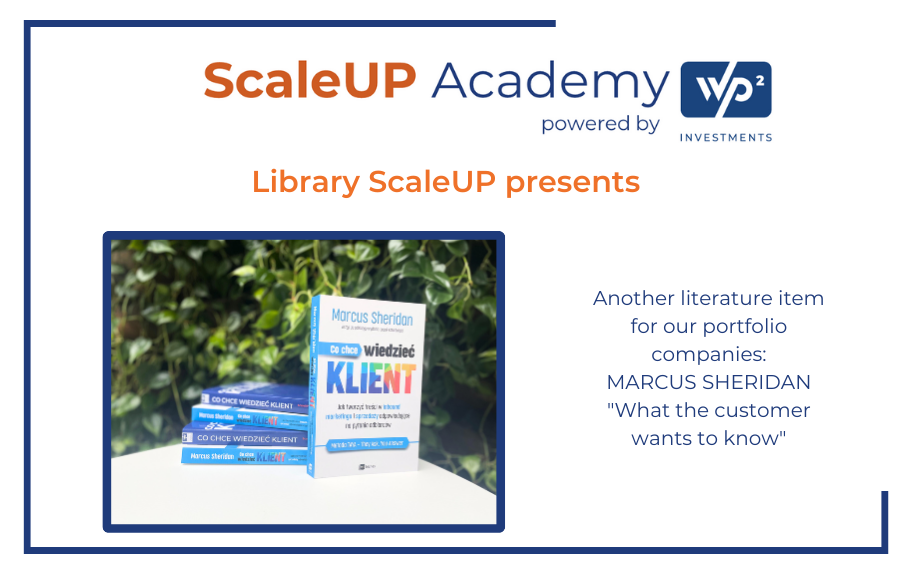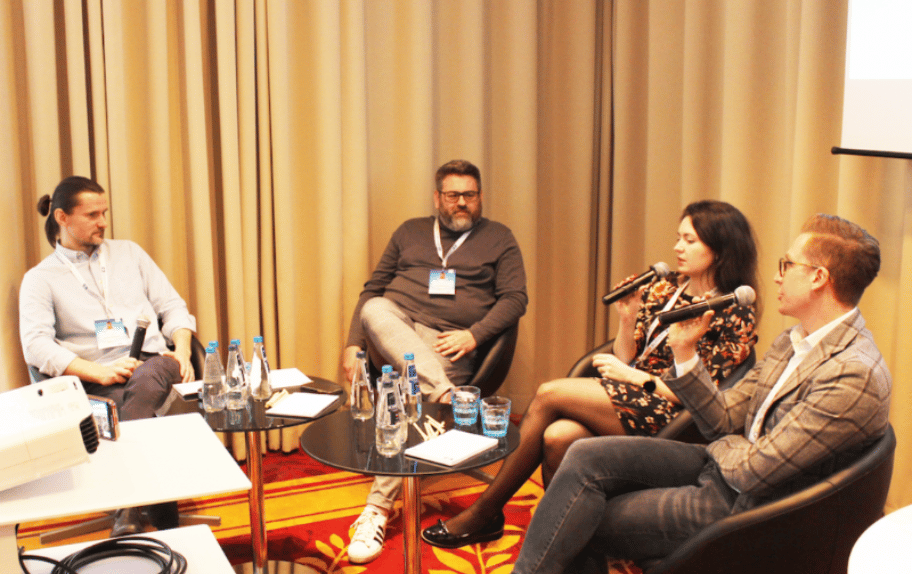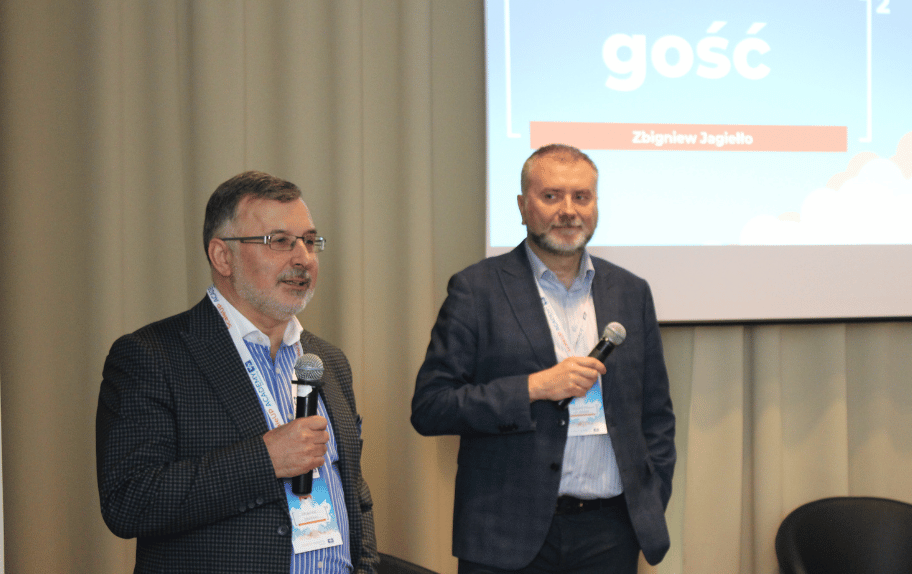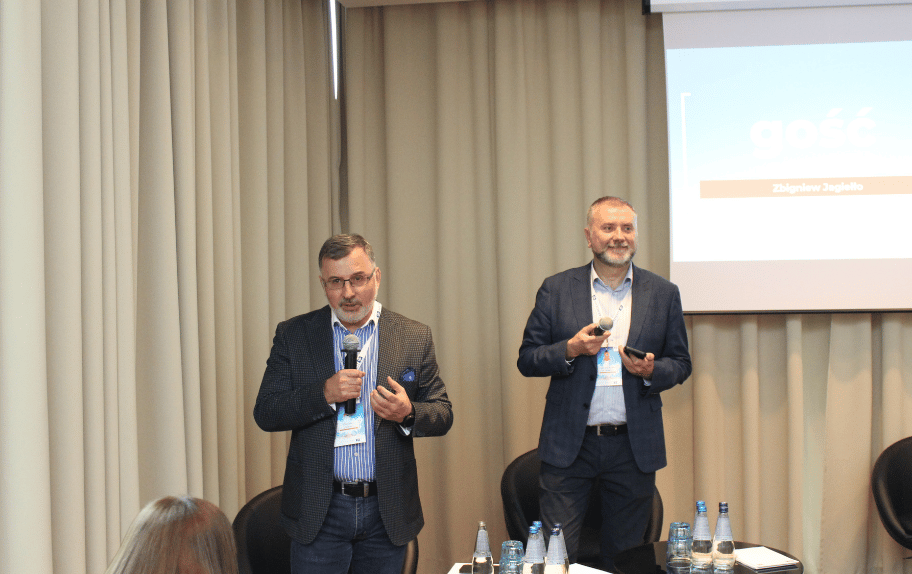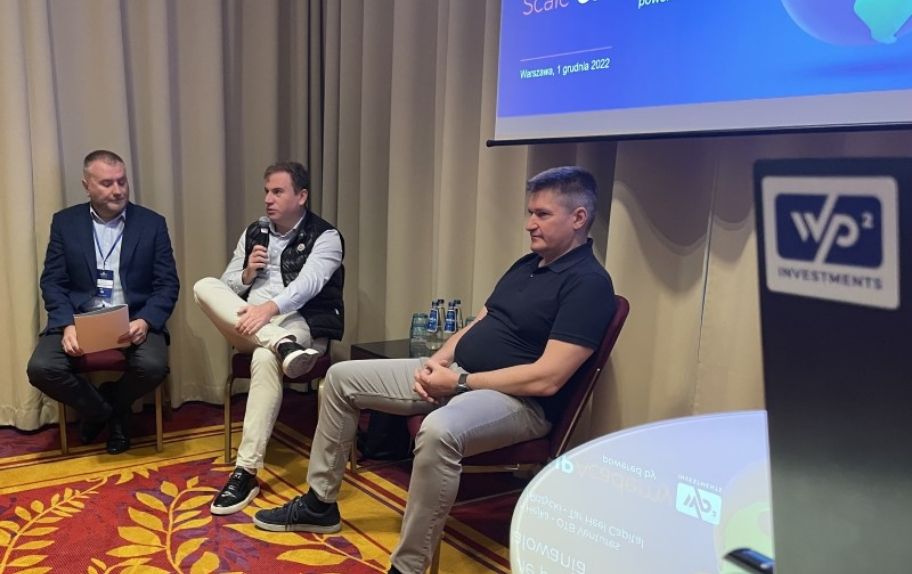We present a short recording of the debate of Grant Advisors, which took place as part of the conference organized by WP2 Investments in April 2023 at the Marriott Hotel. The debate was attended by Karolina Jóźwik from Crido, Tomasz Skalski from Euro Invest Group and Piotr Wanicki from Elpartners. The debate was moderated by Mariusz Bagan from WP2 Investments.
Mariusz Bagan: We are interested in where our companies can obtain funding for business development and scaling under subsidy programs? We have completed a special webinar on the SMART path in the FENG Program, so we assume that there is some knowledge on this subject, so at the beginning I will ask what else besides SMART FENG?
Karolina Jóźwik: In addition to FENG, it is also worth looking towards ROPs, i.e. Regional Operational Programmes, where funding is slightly lower, with a lower allocation, but still attractive. There, we can also apply for funding for e.g. R+D projects, but here it is no longer necessary to prove innovation at the supranational level - depending on the rules of a specific competition, an innovation on the scale of an enterprise or a country is sufficient, hence sometimes it is simply easier to get such financing under the ROP.
Piotr Wanicki: Sometimes it is also the case that slightly different accents are placed in FENG and slightly different in the CHR. In the Regional Operational Programs, more attention is paid to formal issues, project financing, i.e. how the own contribution will be ensured. For example, it may be important whether someone has a loan promise or a loan agreement. However, when it comes to the SMART path, the main emphasis here is on innovation and the description of research and development work.
Mariusz Bagan: So if we know that we do not have an innovative project, it is worth checking the ROP instead of SMART FENG. What else? What other program can also be a good solution then?
Karolina Jóźwik: Eastern Poland Programme. It is a program narrowed down to a few voivodeships on the eastern wall, from Podlasie, Warmia, Masuria and the Lublin region to Podkarpacie and Świętokrzyskie. Due to the fact that these areas are still below, let's say, this EU level of development, they have an additional fund created for such activities.
Tomasz Skalski: Eastern Poland is a very tempting subsidy prospect, but it is worth remembering that there are also sometimes restrictions for companies from outside the region in competitions, e.g. as regards the obligation to have a registered office or branch on the eastern wall. However, we should remember that this is a requirement, not an obstacle, especially when we think in the context of the entire EU perspective for 2021-2027, and not just the next year.
Piotr Wanicki: In addition, in the new perspective, there is a new instrument related to the Just Transition Fund for former post-mining areas with a separate allocation to which significant funds will be directed for research and development projects, for green energy and for increasing competitiveness. This is mainly about the Silesian, Łódź, Greater Poland, Lesser Poland and Lower Silesian Voivodeships, with particular emphasis on the Wałbrzych subregion or the Bełchatów subregion in the Łódź Voivodeship.
Mariusz Bagan: If we were to sum up, what projects and which sectors have the best chances in the new EU programmes?
Piotr Wanicki: All of them. If someone has a good product, has an innovative solution, wants to scale it, or just wants to develop it. There are almost no exclusions, unless it's tobacco and alcohol and things like that, so these types of projects are out of the question. However, there is no point in looking through the prism of the industry. When it comes to your industries in these three areas in which you operate, there are fintech, digital & tech, and renewable energy sources, there are no contraindications.
Tomasz Skalski: In previous programs, there was a very strong emphasis on a new, innovative or fundamentally changed product. However, according to the new Oslo textbook, an innovative process is also important. And this is a big change, because at the moment we are preparing several applications, for example, we do not have very innovative products, but the technological process of producing these products and changes in the production process result in a specific reduction in energy consumption, a reduction in costs that were not treated as innovation in the past. And at this point, they have already been.
Mariusz Bagan: Speaking of energy, what about greentech companies and companies from the renewable energy sector? The FENIKS Program was supposed to be dedicated to them, which will start only in the autumn of this year, but maybe there are ways to process them as part of already open Programs such as FENG or ROP?
Tomasz Skalski: I have 2 or 3 biogas plants that complement large projects and they are responsible for managing 100% of waste. The electricity produced from this waste stays in the company, and the heat is sold outside, and we have a response from the Implementing Authority that in this case the implementation module in the SMART path in the FENG Program and the greening module have been recognized as qualified. This is the best proof that with proper gymnastics, it is possible to build a biogas plant already in the FENG program, as an extension of the existing production plant. However, it is true that before we started writing the application and accepting this contract, we first sent over 20 inquiries to the Institution implementing this program.
Piotr Wanicki: When it comes to the circular economy, it is still potentially possible to finance from, for example, Eastern Polish Poland, but only for those entities that will implement the project there, because in this case it is not important where you have your headquarters, where you have a branch, but the place where the project is implemented is important.
Mariusz Bagan: We started with energy companies and biogas plants, and going further through the industries in our portfolio, the question is, is there any program dedicated to fintechs? FERC, or European Funds for Digital Development, something that should be a natural direction for this sector at the beginning, is in fact not?
Tomasz Skalski: What is in the programme assumptions often flattens out in the competition regulations. This was the case with robo grants. There were supposed to be robo grants, and then suddenly the ministry made a snap and made robo grants, but only for the furniture industry. So at the moment, there is nothing dedicated specifically to fintechs, but there are other publicly available programs where any fintech or non-fintech company can submit applications.
Mariusz Bagan: We already know what opportunities we have in individual sectors in 2023, and what can we count on in 2024?
Tomasz Skalski: Most of the programs mentioned above will also have their editions in 2024. On the other hand, with the most popular SMART path in the FENG program, the idea of the Leading Institutions was to close the SMART path by June 30, 2023. The next round is not expected to start until January 2024. This year, until August, there will only be projects submitted in consortia.
Piotr Wanicki: There will also be an edition of the SMART path at FENG until the end of August 2023 for accessibility, i.e. meeting the needs of, for example, excluded people with disabilities. On the other hand, the SMART path in 2024 will operate on different principles than these 2 current rounds. I am convinced of that. Because the current deal for the ministry is a kind of pilot project. There has never been such a program in a modular form before. They also learn.
Tomasz Skalski: It may also be that a lot of funds will be contracted, and then they may simply return to the pool. Because, for example, someone can plan a very comprehensive project. First, the R+D module of developing an innovative solution. In the next module, implementing innovations, building a factory, purchasing fixed assets, greening and so on. However, it will turn out after the B+R module after the first two stages that the project does not make sense, because we are not able to achieve the result and all other modules lose their meaning. Therefore, when it comes to dates and allocations in individual rounds, I wouldn't get too attached. However, what I can recommend, I can only recommend that since we have a detailed description of the priority axes and basic information on what activities are to be supported and what the funds are to be used for, it is worth considering simply in terms of needs. You need to map the needs in the company and pre-adjust the sources of financing. Then, when the schedule appears and the regulations appear, confirm these assumptions and then apply for it together with the subsidy company.
Mariusz Bagan: Speaking of needs, what if the company needs internationalization? Are there special subsidy programs that will help us scale our business internationally?
Piotr Wanicki: In October 2023, a program will be announced, similar to what Go to Brand was before. That is, related to internationalization with the possibility of obtaining funding for trips, fairs, conferences or trade missions. Until now, it looked like this: Go to Brand was settled as a lump sum and the level of eligible costs could not exceed EUR 100,000. However, under the new guidelines, this level has increased to EUR 200,000.
Mariusz Bagan: 200,000 euros is not a dizzying sum, but it should be enough for hotels, flights, conferences and fairs; ) And seriously, of course this is also something, because it is almost PLN 1 million. To sum up - internationalization can be done either as part of the successor to the Go to Brand Program you mentioned, or as part of the optional module in the SMART path. How do they differ?
Piotr Wanicki: The main difference is that in the SMART path you cannot have more than 20% of the eligible costs of the B+R module. The advantage here, however, is that you can choose any events, fairs, economic missions, etc. On the other hand, in the new Go to Brand, there will be industry promotion programs designated by the ministry, i.e. specific events will be indicated in advance and only after meeting a certain minimum from the list, they can be supplemented with additional trips. It can be done and it is not that difficult.
Mariusz Bagan: In the context of subsidies, entrepreneurs are usually interested in 3 things: how much can we get, how much do we have to put in ourselves, and how long does it all take?
Karolina Jóźwik: I'll tell you like a real advisor, it depends. We can assume that on average the subsidy is between 50 and 60%. So the own contribution is then at the level of 40-50%. Sometimes in various subsidy programs there may be some additional restrictions, or bonuses and these rules may be different, and for example, then the own contribution may be at the level of up to 30%. However, answering the question of how much we can get, again on average, it can be assumed that most often these are amounts between PLN 2 and 5 million.
Mariusz Bagan: And what about the time needed for the whole process?
Karolina Jóźwik: As far as time is concerned, it must be assumed that writing an application and gathering the necessary documentation takes at least 5-6 weeks of intensive work. After that, the Managing Institution has a certain period of time to evaluate the application, in accordance with the rules of a given competition - in the case of the SMART path, it is up to 100 days for consideration, although in practice it is more likely to be up to 120 days, i.e. about 4 months. Then plus-minus a month to complete the documents and sign the contract when the application is approved.
Mariusz Bagan: Ok, so we know how much plus or minus we can get, we know how much we need for our own contribution, we know how long it all takes, we know what programs we have at our disposal this year and next year, so now let's answer the questions that are obvious to you as experts, but are not so obvious to others. Something that is often said during working meetings with companies: if someone has applied for funding, can they apply again?
Karolina Jóźwik: There is a rule that the project that is under review cannot be submitted again. It must wait for the decision.
Piotr Wanicki: Yes, the same project cannot be the subject of a different assessment, but if a company has an idea for 3 projects, it can even submit 3 projects to the same Programme. Unless there is a different provision in the regulations or in the criteria of the Program.
Mariusz Bagan: Another question that is often asked: is it possible to submit the same application to several Programmes? And immediately the second question that often arises: is there any Program that finances 100% of the project value without own contribution?
Tomasz Skalski: Of course, but you have to be a scientific and research unit, in addition to being in conjunction with a consortium ;)
Piotr Wanicki: And it is a scientific unit that does not run but implements a project as part of a non-economic activity.
Tomasz Skalski: Yes, that's when it's 100% the most ;) However, you can submit to several programs at the same time, but after a positive outcome of the competitions, you still have to choose only one.
Mariusz Bagan: What if we know that we have nothing today? Because there are also several such companies - we do not have an innovative solution, we do not operate on the eastern wall, we have no idea. The question is, where to start, how to look for this innovation, how to understand it?
Tomasz Skalski: I can start because I really liked Kornel's statement. We worked together for 3 months. I saw, more and more with each meeting, that this would not result in innovation in the subsidy definition. Kornel was very persistent and tried in all possible ways. The truth is that starting from the idea you have, you need to know that it is often not innovative in understanding the world of subsidies. Something that is innovative for you in terms of business, according to the definition of the Institution running the project, is not. These are regulatory things. Hence the conclusion that first you need to understand this mode of evaluation and qualification of the application, which, it is true, is not particularly startup-like.
Karolina Jóźwik: I agree. In our country, it is often said that writing an application is the least of the problems. The same applies to the financial modeling of this project. The hardest part is to pick out this innovation. This is a large part of the conceptual work.
Piotr Wanicki: It's true, not every innovative solution that you think is innovative is research and development work in the sense of grants. Another thing is to determine how to describe these research and development works. So that they simply meet the relevant definitions that are set out in the competition, i.e. in fact, that they are an answer at the level of technological readiness required in the documentation. The most difficult thing is to define this innovation and parameterize it, i.e. to indicate specifically the numerical values with which you are able to refer to the competition, that this solution is indeed x times better, faster, more qualitative. Because we can always write that our solution will be better, but the expert will ask, but what does better mean for you? In what sense can it be faster? Or whether an acceleration of 5 seconds in a given process will indicate an innovative solution and some special competitive advantage for which there is market demand. And this is also sometimes very difficult to define, but it can be done.
Mariusz Bagan: What else is important? What else should you pay attention to in the entire grant process, not just when writing an application?
Piotr Wanicki: It is very important to also have experience in accounting when writing an application. Because this administrative settlement is laborious, but it is not so burdensome if you know the mechanisms and keep track of deadlines. On the other hand, settling payrolls and the financial side is already more difficult, and the consequences are more serious. There are many regulations that regulate the method of determining the eligibility of expenditures, so it is also important to have experience in managing and settling such a project.
Mariusz Bagan: Agnieszka from Natural Antibody said exactly the same thing, that it is best to delegate the settlement of the project to a subsidy company, because doing it in-house takes much more time. In addition, the risk of formal errors is much greater and hundreds of thousands of zlotys are lost, as Krzysztof from Verestro told us in his example. Therefore, hearing these voices from our companies, it is also worth asking not only about the settlement of the project, but also about its management? I am thinking here about inquiries and all those other variables that take up time for our companies, and for you this is something that is regular work, is easier and, importantly, safer for the entire project.
Tomasz Skalski: I can't imagine carrying out a project in which entities like ours will write applications, lead to the signing of a contract, and then the applicant will settle it on their own. Of course, this is theoretically possible, but from my many years of experience, I have had maybe one or two such cases. And it's not about the fact that we scare or encourage people to cooperate with us, but the number of bookkeeping that appears when managing and settling the project is simply growing. In fact, you need to have a document for everything. When it comes to settlements, for example, my billing department is much larger than the department of writing applications. And this is probably the best answer.
Karolina Jóźwik: You just have to be able to write these reports and it really takes a lot of time, and in addition, the agreement with the Institution imposes various other requirements. Then an entity experienced in many different specific situations knows what to look for. That is why I also recommend using a qualified entity to manage the project and settle it.
Mariusz Bagan: Several times during this meeting, we talked about the National Recovery Plan, which is heavily delayed for political reasons. It is worth mentioning it at least in a few sentences, because it is a very important component of the entire subsidy budget. Out of 100 billion euros for the development of the Polish economy, 24 billion were to be from the National Recovery Plan. Without the NRP, there will be 25% less. This is a big loss, especially since 1/3 of it was supposed to be used to support entrepreneurs.
Tomasz Skalski: KPO is like Yeti. Everyone has heard of him, but no one has seen him yet.
Piotr Wanicki: These funds are 2 years late. The Ministry has said so many times that it is just a moment away, most recently in mid-March. Now they say that it will be in May, that the work is still in progress, that he is already finishing some documents. It is clear that this will be dragged out until there is no official decision.
Mariusz Bagan: Time for questions from the audience. Welcome.
Paweł Chrzan (Wellbee): A question about innovation. I have some experience with applications and I have the impression that these programs are well written, but for the production process, e.g. for a steel mill, and less so for online. What advice do you have for writing and creating such projects or innovations? How to describe them, how to define milestones, what to compare with what? What does it mean that we are better, better than anyone, by how much, how to measure it, etc.?
Piotr Wanicki: It has to be adapted to a given project and there is no one golden mean for it. You need to carefully analyze what you really want to do and whether it has to be innovative. I think that nowadays there is no such thing that we reinvent something, but there is always some competition. You have to compare yourself to it and see what we are better at and how much better.
Paweł Chrzan (Wellbee): But we don't have access to this data from our competitors, it is often classified data.
Tomasz Skalski: That's right, and that's sometimes a real problem. Then you have to rely on the available knowledge and build arguments on it and, for example, show what you are better at by that one nanosecond, which will then translate into xxxx terabytes of data and save time, resources, etc. Or you put an engine that will consume less power on the server.
Adam Bartkiewicz (Stone): You mentioned that one company can submit several applications at the same time. And now, if there are several of these applications, does it increase the chances or just the opposite?
Tomasz Skalski: It depends. With research projects, experts may conclude that it is the same thing. That it is an artificial division of the project, that it is the same research topic. With other projects outside of B+R, such a risk is rather non-existent.
Piotr Widacki (DOV): We have a project in the field of financial intermediation, and there is an innovation somewhere on the side, so can something like this be financed from subsidies or not? And the second question about the crypto project. Are the institutions responsible for grant programs interested in this?
Piotr Wanicki: If there is innovation there, then in the SMART path, of course yes. And here it does not matter whether it is financial intermediation or another category. Cryptocurrencies are not on any banned list either. I had projects, financed from the Regional Operational Program from the Lower Silesian Voivodeship, which concerned cryptocurrencies. So it is doable.
Tomasz Skalski: We have to look at the area of innovation and whether it will actually happen. And whether it is a financial intermediation or an innovative drug, it does not matter anymore.
Mariusz Bagan: We close the debate with a question about finance and cryptocurrencies. I would like to thank our guests for participating in the panel and all of you for your active participation. Thank you!
